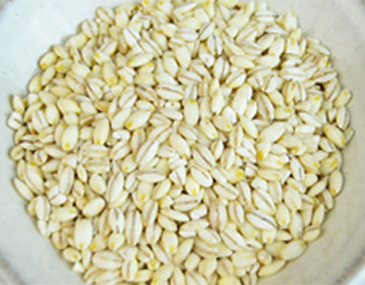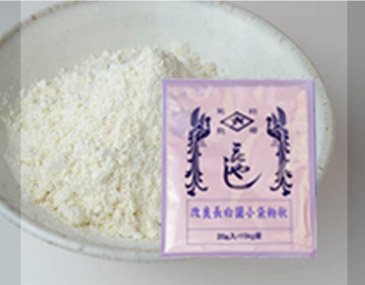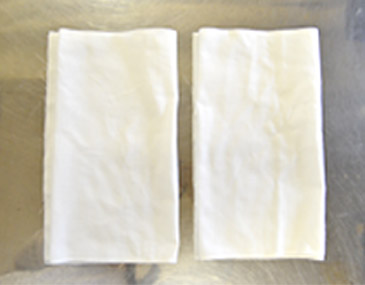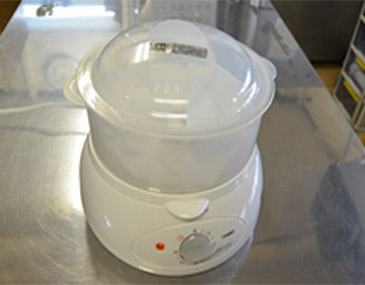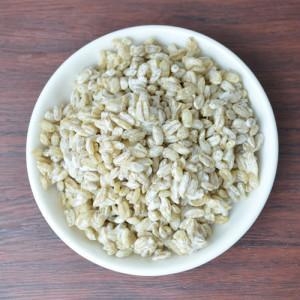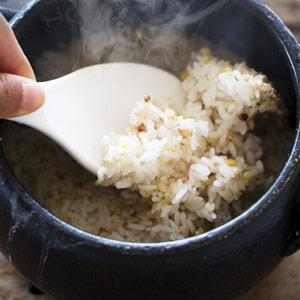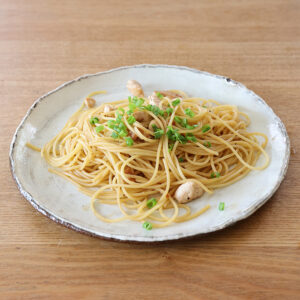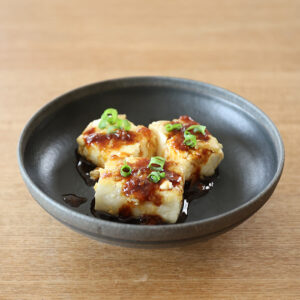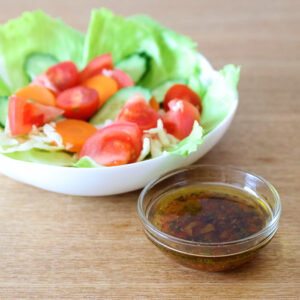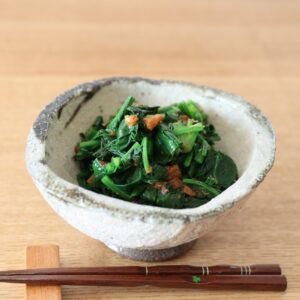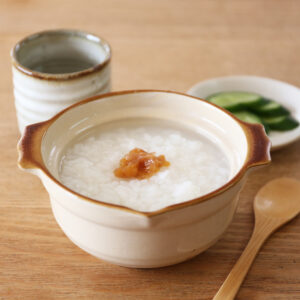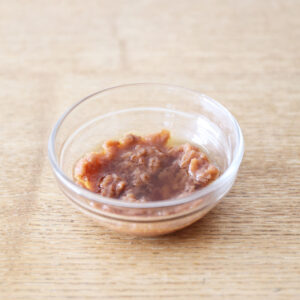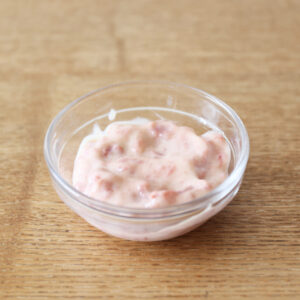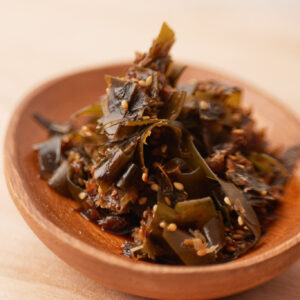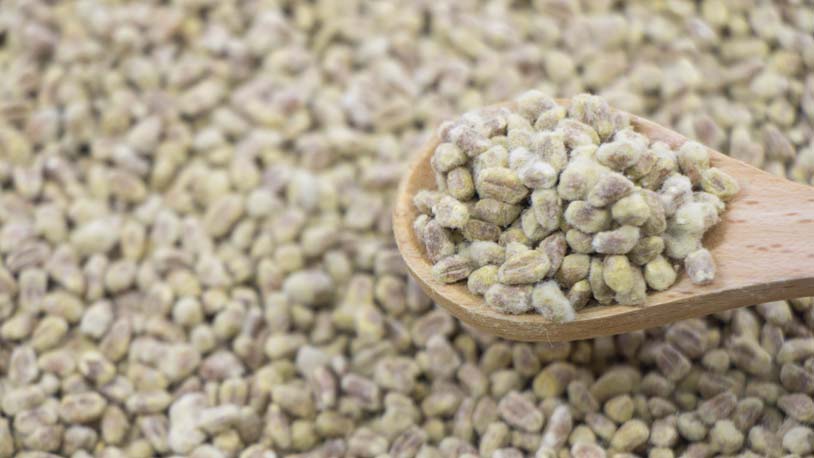
Barley koji is one type of koji, made by cooked barley that has been inoculated with koji mold (koji kin). With barley koji, you can make various foods, such as barley miso.
In this article, we will explain how to make barley koji (using koji starter, in this case, Aspergillus oryzae, inoculated on wheat/barley).
We hope that you can make nice barley koji!
What is Barley Koji?
Barley koji is used as the raw material for making Japanese fermentation food such as barley miso (麦味噌), kinzanji miso, and shoyu. At the sake brewery, barley koji also used to make barley shochu (麦焼酎).
The barley miso made with barley koji has a lighter taste than the rice miso made with rice koji.
This type of koji has a unique fragrant aroma from barley that becomes its charm point.

Barley Miso (left) and Kinzanji Miso (right)
Aside from barley koji, there are rice koji and soybean koji.
Please refer to this article to learn more about the kinds of koji!
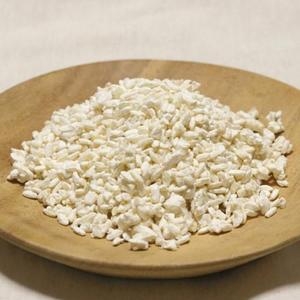
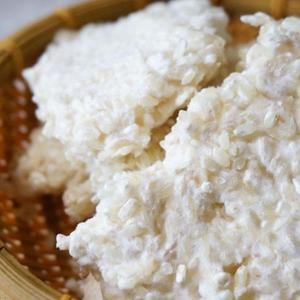
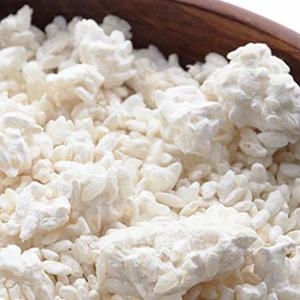
Ingredients and Tools for Making Barley Koji
This recipe is an instruction from a Japanese koji manufacturer summarized by Kawashima the Japanstore.
Please use this as a reference to how to make barley koji.
How to Make Barley Koji – AT GLANCE
Ingredients and Tools for Making Barley Koji
The ingredients below is for 250g finished amount of barley koji.
Note: In order to avoid the breeding of unwanted germs, wash the tools clean and properly.
You can disinfect the tools by boiling them.

5. Koji fermenter (You can also use Yogurtia or cooler box)
More Convenient If You Have
-
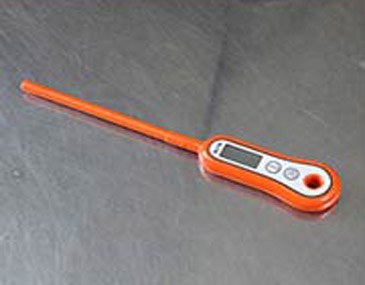
5. Thermometer
-
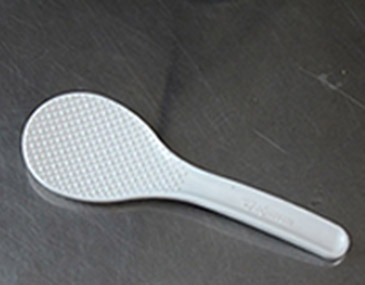
6. Rice paddle
-
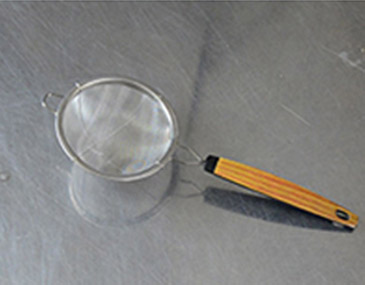
7. Strainer, tea strainer
-
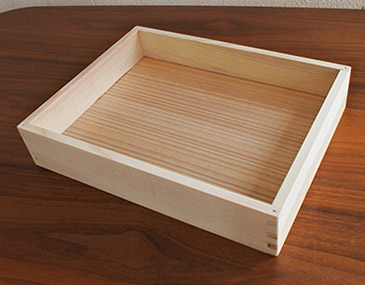
The Amount of Barley Koji That Can be Made and the Amount of Barley and Koji Starter Used
Portion of barley
Portion of koji starter
Amount of finished barley koji (estimated)
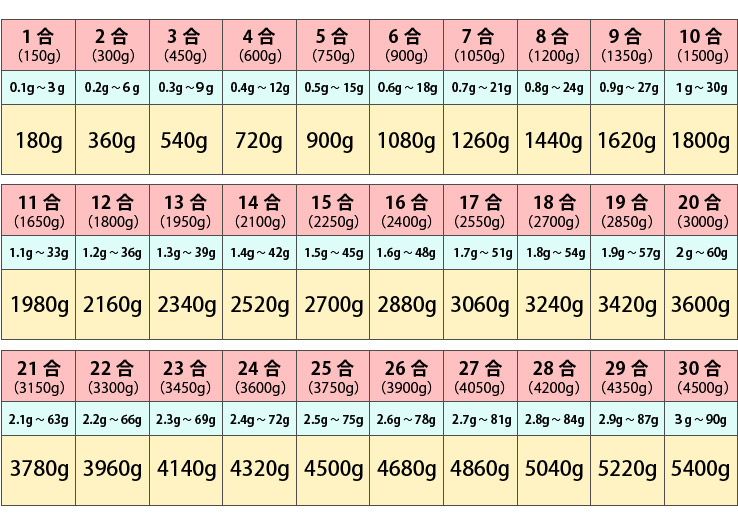
Note: 合 is a Japanese unit of measurement, usually used to measure rice, sake, etc. (1合 equal to approx. 150 grams, 0,18 liters, or 0,33 metres square)
This is just a reference to the amount of barley koji and koji starter seed.
For the koji starter, it is easier to make barley koji if you use koji starter in bigger amount. Even if you use a lot of koji starter, there will be no problem.
The Amount of Miso That Can Be Made and the Amount of Ingredients Used
Finished Miso
|
2.5 kg | 5 kg | 7.5 kg | 10 kg | 12.5 kg | 15 kg | 17.5 kg | 20 kg | 22.5 kg | 25 kg |
Rice Koji
|
1 kg | 2 kg | 3 kg | 4 kg | 5 kg | 6 kg | 7 kg | 8 kg | 9 kg | 10 kg |
Soybeans
|
500 gr | 1 kg | 1.5 kg | 2 kg | 2.5 kg | 3 kg | 3.5 kg | 4 kg | 4.5 kg | 5 kg |
Salt
|
300 gr | 600 gr | 900 gr | 1.2 kg | 1.5 kg | 1.8 kg | 2.1 kg | 2.4 kg | 2.7 kg | 3 kg |
Finished Miso
|
2.5 kg | 5 kg | 7.5 kg | 10 kg | 12.5 kg |
Rice Koji
|
1 kg | 2 kg | 3 kg | 4 kg | 5 kg |
Soybeans
|
500 gr | 1 kg | 1.5 kg | 2 kg | 2.5 kg |
Salt
|
300 gr | 600 gr | 900 gr | 1.2 kg | 1.5 kg |
| 15 kg | 17.5 kg | 20 kg | 22.5 kg | 25 kg |
| 6 kg | 7 kg | 8 kg | 9 kg | 10 kg |
| 3 kg | 3.5 kg | 4 kg | 4.5 kg | 5 kg |
| 1.8 kg | 2.1 kg | 2.4 kg | 2.7 kg | 3 kg |
This is the portion for miso with salt concentration 12.5% (sweet flavor).
How to Make Barley Koji
Now, let’s continue with further explanations for how to make barley koji.
Steps of Making Barley Koji
1. Wash the barley, then soak it in water
2. Drain water from the barley
3. Steam the barley
4. Sprinkle the koji seed (koji starter) on steamed barley (seeding)
5. Keep the barley warm (18-20 hours)
6. Untangle the in-fermenting-process barley (First maintenance of koji)
7. Second maintenance of koji
8. Completion of koji
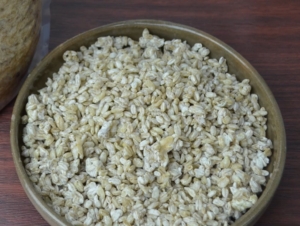
How to Make Barley Koji
Equipment
- Steaming Cloth
- Steam cooker or steamer
- Koji fermenter
- Thermometer
- Rice paddle
- Strainer, tea strainer (sieve)
- Koji Lid/Koji Tray
Ingredients
- 1 kg Pearl Barley
- 2-8 g Koji Starter for Miso
Instructions
STEP 1. Wash the barley, then soak it in water
- Wash the barley 2-3 times or until the white dirt dissapears. To begin soaking, add a clean water until the barley is all soaked. The appropriate time to soak the barley in 20℃ water is about 1 hour. Since barley has fast speed of water suction, don’t soak it in water for a long time.
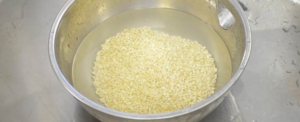
STEP 2. Drain water from the barley
- Take the soaked barley with a strainer, and drain it for about 30 minutes. Make sure that all water were drained well. If there’s water left, the finished result will not be good barley koji.Also, if in the middle of draining process you stir the barley, or wipe the strainer, the surface of barley may be scraped into powder, causing stickiness. Please put the barley on strainer and leave it as it is when draining the water.
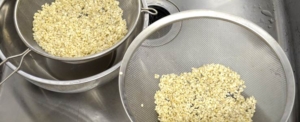
STEP 3. Steam the barley
- Wrap the barley with steaming cloth and steam it for approximately 40-50 minutes. You can use instant pot (with steamer function), any steamer device, or bamboo steamer. The steaming process here affects the finished result of koji greatly, so let's be careful when steaming teh barley. Please steam the barley slowly and set the fire not too strong so the heat can nicely pass through the core of the barley.When steaming with weak steam for a long time, please be careful as it will become koji with high water content.
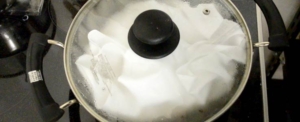
- When the barley grain became translucent, elastic, there was no core when you pinch it, and its texture is just springy like a mochi, then the steaming condition is good.While waiting for the steaming process to be done, please prepare the koji fermenter device and warm it until 35℃
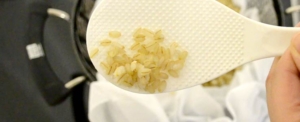
STEP 4. Sprinkle the koji seed (koji starter) on steamed barley (seeding)
- Spread the steamed barley on a clean tray (※please be careful not to burn yourself because of the hot temperature). Cool off the barley's temperature by spreading it with rice paddle.Sprinkle the koji starter suitable for making barley koji when the temperature reaches 35-40℃. This steep is called “seeding”. Use a sieve to sprinkle the koji starter. After that, mix well.
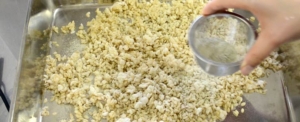
- Use 1g of koji starter for 500g of steamed barley. But, it’s easier to succeed the breeding of the koji starter if you use 3 to 4 times of that amount, so you can increase the koji starter quantity to increase the possibility of success.
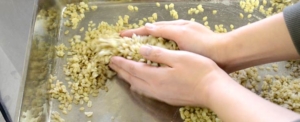
- After you finish the seeding, quickly gather the barley together and wrap it with a clean cloth.When wrapping it with cloth, wrap it roundedly as small as possible by applying force.
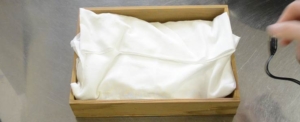
STEP 5. Keep the barley warm (18-20 hours)
- Place the wrapped barley on the Kojibuta (Koji Lid/Koji Tray), then put it in the koji fermenter machine. Warm the barley for 18-20 hours. The optimum temperature of the surface of the barley is around 30-35℃.
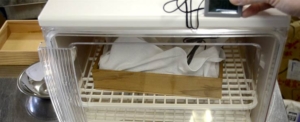
STEP 6. Untangle the in-fermenting-process barley (First maintenance of koji)
- After 18-20 hours of the first warming process, the temperature of barley will rise, and it will produce a sweet aroma of koji. When the temperature rises to about 38 to 40℃, take it out, untangle the clumps of the barley with both hands to lower the temperature of the barley.After that, wrap it in the cloth and put it again in the fermenter machine. Keep it warm for 5-6 more hours.
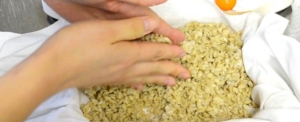
STEP 7. Second maintenance of koji
- When 5-6 hours have passed from the first maintenance of koji, the koji starter will further breed, and the barley koji temperature will rise again to 36-40℃. At this moment, once more, quickly untangle the clumps of barley and stir the whole of barley koji. This time also, keep in mind to do the maintenance quickly so that the temperature of barley does not go down under 30℃. After the second maintenance of koji, keep it warm again for 19-21 more hours.
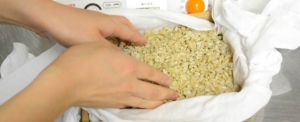
STEP 8. Completion of koji
- After 19-21 hours from the second maintenance (42-48 hours from sprinkling the koji starter on steamed barley {seeding}), good quality barley koji is completed if it has a nice chestnut-like scent. The indication of the completion of koji is that if the hyphae of koji starter stretches out, the barley sticks to each other and becomes a plate shape, and easy to disentangle by hand.
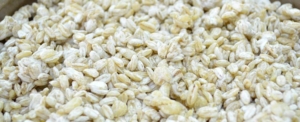
How to Store the Barley Koji
After the barley koji is completed, it’s recommended to use the koji as soon as possible.
When storing in a refrigerator, put it in hygroscopic (material that tends to absorb moisture from the air) paper bag. In the refrigerator, you can save the barley koji for about 1 week.
If you plan to use it later for a long time, put it in a zip lock (a plastic bag with zipper/fasterner), etc. and keep it in the freezer. You can save the barley koji for about 1-3 months in freezer.
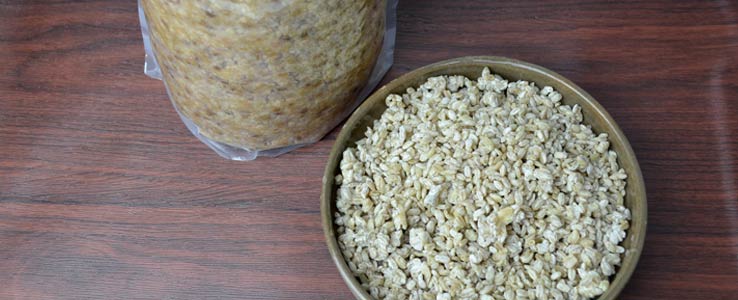
When used for making miso, mix the barley koji with salt.
Adding salt to miso could prevent miso for further fermentation when storing.
Health Benefits of Koji
Fermented food has the skill to control our intestinal environment.
If we have a better intestinal environment (intestinal flora), it could increase skin condition and maintain body immunity.
Fermented foods are made by microorganisms that induce fermentation.
The familiar microorganisms are Aspergillus oryzae, Bacillus natto, Lactobacillus, and other bacteria/fungus. Among them, the one that creates miso, shoyu (Japanese soy sauce), and sake is koji starter (Aspergillus oryzae).
This koji starter (Aspergillus oryzae) matches well with Japan’s climate and, thus, making it one of the irreplaceable microorganisms for making Japanese fermented foods from its first discovery in the Muromachi Period (1336–1573).
Major Nutrients of Koji
■ Vitamin B1 : Helps produce energy | Fatigue recovery | Suppress irritation/stress feeling | Amnesia prevention | Helps breaking down carbohydrates.
■ Vitamin B2 : Helps the metabolism of skin | Helps breaking don lipids | Accelerate growth speed | Sebum control | Prevent oral ulcer/stomatitis.
■ Vitamin B6 : Reduce premenstrual syndrome (PMS) | Improve immunity | Prevent arteriosclerosis | Helps breaking down proteins and lipids | Prevent oral ulcer/stomatitis | Suppress the excitation of nerve cells.
■ Vitamin H (Biotin) : Suppressing the cause of atopic dermatitis | Prevent diabetes | Alleviate epilation and gray hairs.
■ Pantothenic acid : Stress resistant | Helps breaking down lipids | Detoxification from chemical compound | Increase good cholesterol | Maintaining the health of skin | Increase immunity.
■ Essential amino acids : Among the 20 types of amino acids making up proteins, nine kinds of them can not be synthesized in the body. If there are any lacks of them, muscle, blood, bone cannot be made.
These nutrients can be consumed in supplements, but when ingested from koji based food, the absorption rate in body is over 90%.
The Benefits of Handmade Koji
■ You know exactly what ingredients are being used.
Formerly, in the Japanese family, miso, shouyu, amazake, etc. were homemade with koji. However, eating habits change with time, and miso, shouyu, amazake changed from “things to make” to “things to buy.” Under such circumstances, there are many people who are uneasy because they don’t know what ingredients is used, in foods such as miso and shio koji (salt koji) available at supermarkets etc. If it’s handmade, you can make it with pesticide-free rice and barley prepared by yourself so it’s safe.
■ Handmade is fun!
When Kawashimaya’s staffs tried to make handmade koji rice, they’re impressed that their hands became so smooth. It’s a famous story that because they engage in sake-making, the hands of chief brewer at sake (Japanese liquor) brewery is beautiful. In koji rice’s nutrients, there are a lot of components that make the skin beautiful. Then, if you make koji rice by yourself, you will take care of it like your own child. Thus, the miso and amazake you made will become more delicious.
■ It’s more economical.
When making miso, you will need koji in kilograms. If you buy it, it will be really pricey. For that, if you make your own koji using koji starter (Apergillus oryzae), it will be much more economical because you can even make koji rice from 15kg of rice.
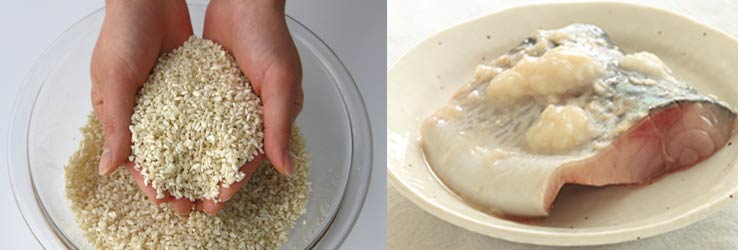
Recipe Using Barley Koji
There are a lot of dishes you can make using Barley Koji. Check our recommended recipes in these articles below:
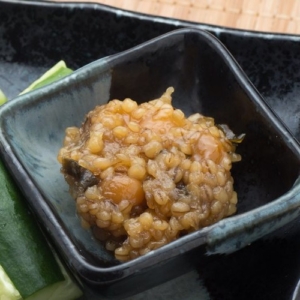
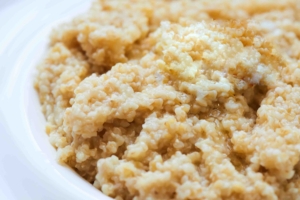
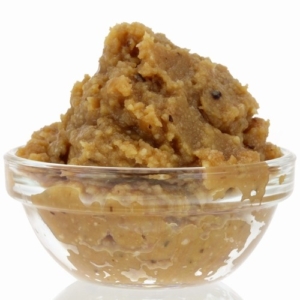
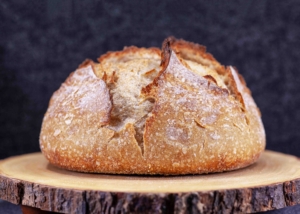
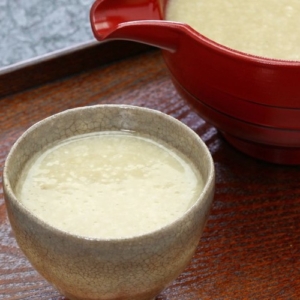
How to Make Barley Koji Q & A
- I feel that there is much water content (moisture) in the steamed barley. How should I decide the proper condition of steaming?
- When crushing the steamed barley grain with your finger, it’s ideal if the barley is elastic and not sticky.
If it’s discolored to yellowish-brown/amber color, plump and elastic, and the surface is not sticky, then it’s in good contidion.
If there is steamed barley(s) which has a large white spot at the center, it is low in water absorption.
- I steamed the barley with weak steam for a long time, and it became gooey (a lot of moisture).
- Please steam with the strong steam so the heat can gush out from the top immediately.
If the steam is weak, moisture will increase rapidly because the steam cannot go out and condenses in barley.
If it takes a few minutes for the steam to come out from the top, obviously the steam is weak.
- Even after maintenance, the temperature of barley koji immediately rise again to over 40℃.
- If the temperature immediately rise again after you do the maintenance, it is a proof that the breeding speed of koji starter is prosperous.
Since barley koji has a large calorific value during propagation, its temperature is easier to rise that koji rice. Temperature should be checked regularly, and when the temperature exceeds 40℃, please do the maintenace immediately, because it’s necessary to lower the temperature of barley and evaporate the water at the same time.
- The color of the finished barley koji is brownish, is that okay?
- When the temperature of barley koji is over 40℃, brown substance (melanoidin) may formed. As the temperature in the fermenter rises high, polysaccharides (starch) are decomposed to monosaccharides (such as glucose) by the enzyme produced by koji, and the protein is broken down into amino acids.
When this monosaccharide reacts with the amino acid, a brown substance (melanoidin) is produced. Therefore, the color of barley koji will become brownish.
It becomes brownish by the function of koji starter’s own enzyme, so it’s not contaminated by other microorganisms, and can be used for making miso without problem. However, since in miso-making the miso is also colored by other pigment, it will be finished as red-brown miso.
By not letting the temperature of koji to 40℃ or higher, discoloration can be prevented.
- The finshed barley koji is sticky.
- It is due to lack of maintenance. There is no problem to use the barley koji for miso preparation. It is important to do the maintenance of koji in the proper timing when the temperature rises.
However, there is no contamination of microorganisms and there is enough enzyme power. So it can be used without any problem in miso-preparing.
Because the amount of moisture in koji is high, miso tends to become loose, so after miso preparation, please took out the liquid that ooze out from miso and be careful so the miso don’ become too loose.
Recommended Products for Barley Koji
Dried Barley Koji Product
Koji Starter suitable for Making Barley Koji

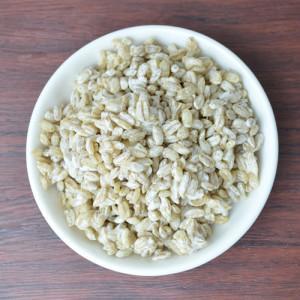
 Content List
Content List